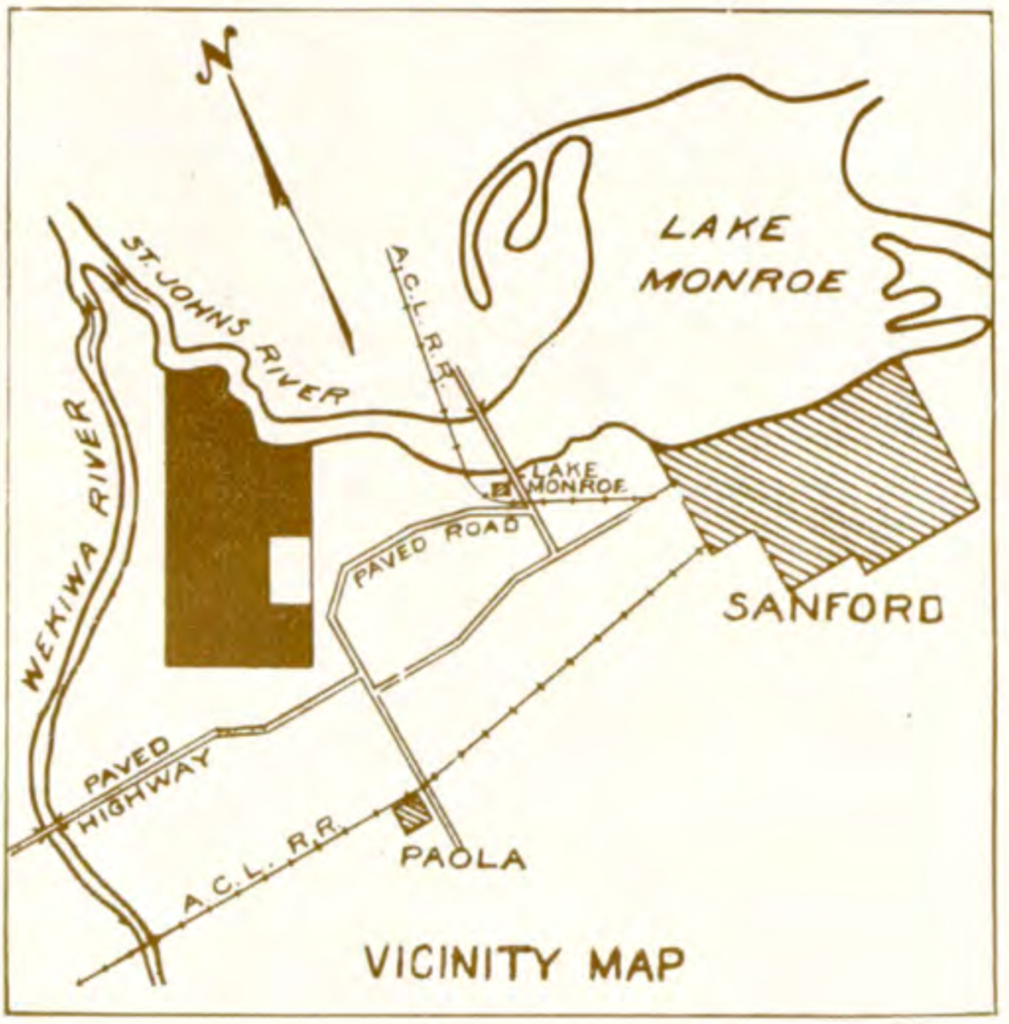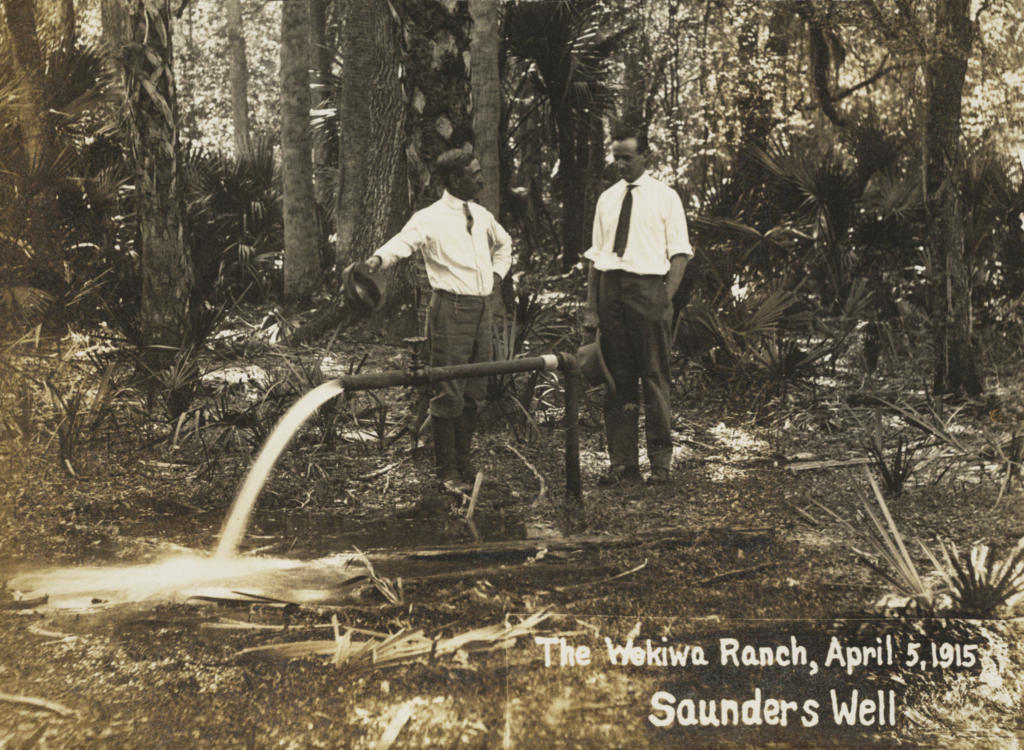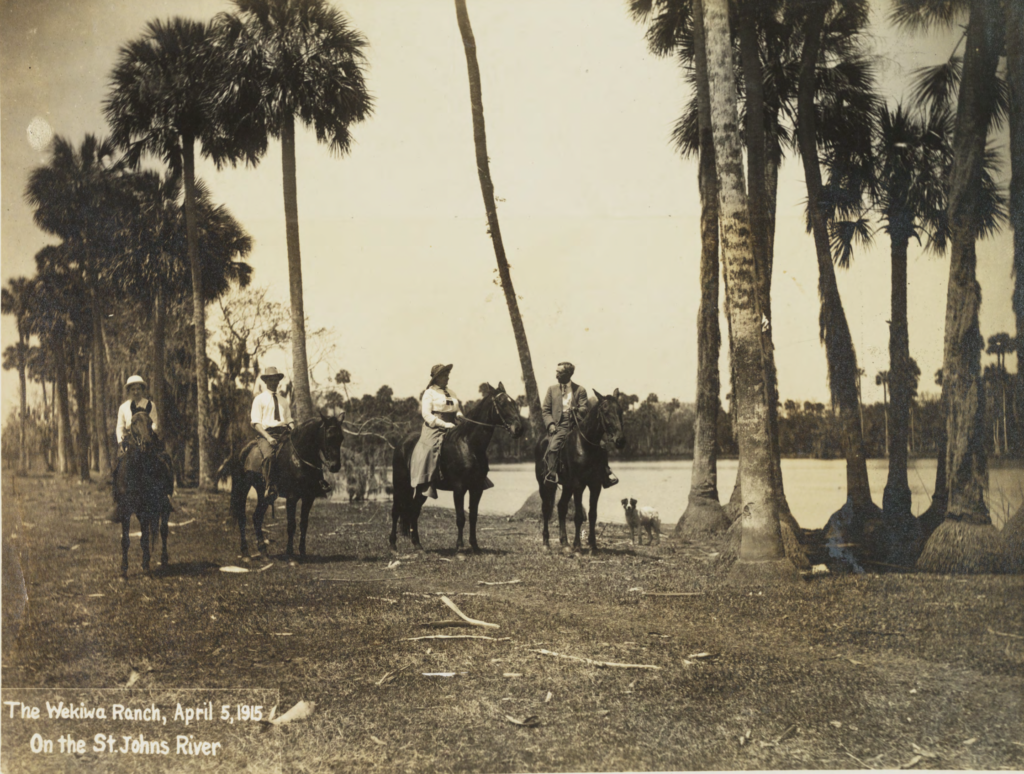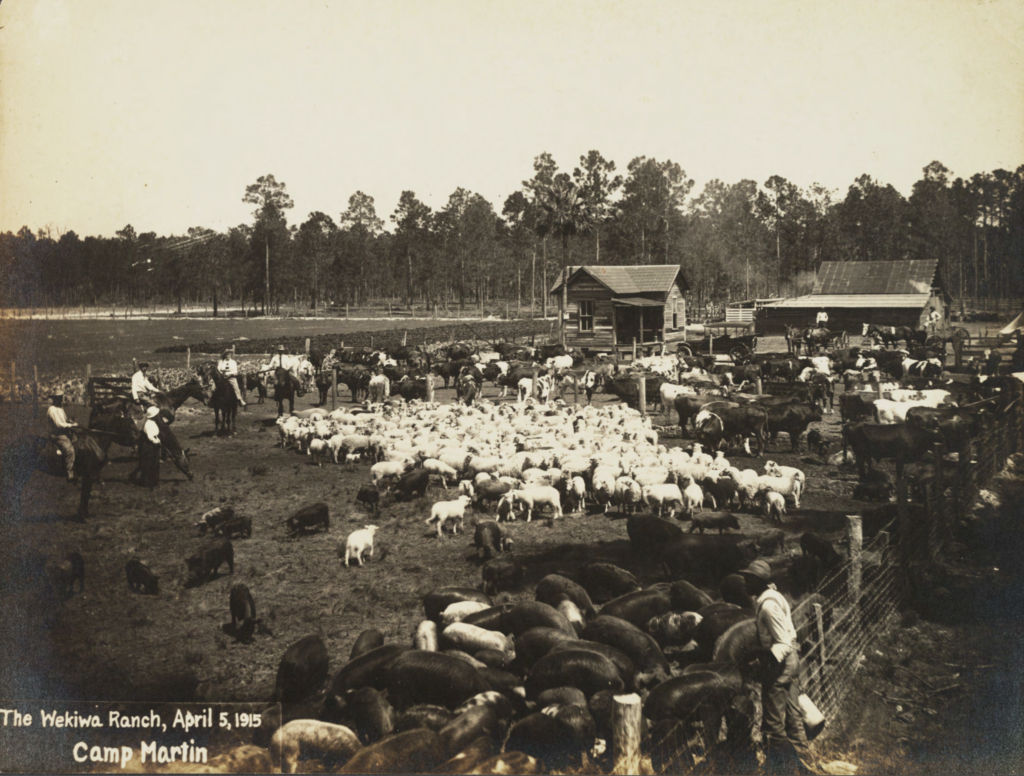
THE WEKIWA RANCH
THE ASTOR GRANT

This remarkable tract, which I acquired in 1915, lies in the angle formed by the confluence of the St. Johns and Wekiwa Rivers, in Seminole County, Florida, about four miles west of Sanford, the county seat and head of navigation of the St. Johns River, and adjoining the town of Lake Monroe. Seminole County ships one-third of the celery grown in the United States, in addition to immense quantities of winter vegetables, cabbage, peppers, lettuce, tomatoes, cucumbers, beans and similar crops, amounting to some 8000 carloads for the season of 1929-1930. There are also in the county more than 600 citrus groves with an aggregate acreage of more than 8800 acres. This tract was formerly owned by the late William Astor of New York, and was known as the Astor Grant. When I acquired the property, I devoted it to the raising of cattle and it was known as the Wekiwa Ranch. It included more than 4000 acres, a portion of which I sold some years ago. The remaining portion described herein and now offered for sale, comprises 2740 acres.
The tract borders the St. Johns River for a distance of about three miles, and rises gradually from the river bank through a distance of about three miles to elevations of from sixty to seventy feet along the southern boundary of the property, making such drainage as may be desirable easy and relatively inexpensive. and providing conditions of cultivation various and adapted to many different crops.
The land lies in the famous “Sanford Celery Delta”. Artesian wells can be had in all parts of it; a number of such wells have been in use for many years with undiminished flow. These artesian wells promise a system of sub-irrigation, sub-drainage and sub-aeration which is perhaps unequaled in the world for the growing of vegetables.
The area of land in Florida which enjoys these unique advantages, is very limited. Of the tract, something over 800 acres, bordering on the St. Johns River throughout the three miles of riverfront, is level prairie land, of extra-ordinarv fertilitv, underlaid with a marl subsoil and hence sweet and subject in part to occasional overflow. This prairie is, however, susceptible of being protected from overflow from the river, by diking or otherwise, at moderate cost. The prairie is now a pasture, densely covered with native and improved grasses, on which supplemented during periods of overflow by the use of the adjoining higher lands.
I have carried a thousand head of cattle and a thousand head of sheep. This land is adapted to the pasturing of beef cattle and sheep, and to the maintenance of a large dairy. On this land I have grown forty tons of sugar cane to the acre, without fertilizer or cultivation, as well as equally noteworthy crops of sorghum, kudzu, soy beans, Para grass and other forage crops. A specimen of this prairie soil was submitted to the Federal Department of Agriculture at Washington; it was reported by the department to be remarkably fertile, and particularly adapted in an extraordinary degree to the growing of bulbs.
Adjoining this prairie on the south are 900 acres of hammock land, from 20 to 30 feet above the river, and covered with a dense growth of oak, pine, gum, cedar, bay, magnolia, hickory, cabbage palmetto and other trees. The soil is black, deep and extremely fertile.
The remainder of the tract is mainly pine land of excellent quality; there are also about 460 acres of young cypress trees lying between the prairie and the hammock land. These lands have all been partially cut over within recent years, but large amounts of second growth timber of all varieties are found on the property.
This property is adapted to the production of any crops that can be successfully grown in Florida. I myself, during my eight years residence on the place, grew celery, lettuce, peppers, corn, sorghum, Irish potatoes, sweet potatoes, beans, cabbage. watermelons, cantaloupes, strawberries. velvet beans, cowpeas, soybeans, kudzu, sugar cane, chufas and other crops, all of them in profusion and of prime quality. On a portion of the original tract sold by me, and subsequently developed as The Astor Farms, notable crops of celery, lettuce, peppers, cabbage, corn and other produce are now being grown. Considerable areas are well adapted to the growing of oranges and grapefruit, as is shown by a grove of wild orange trees which has been growing for many years on the place; other areas are especially adapted to the growing of the products now arousing so much interest in Florida, such a bulbs–paper narcissus, gladiolus. amaryllis, dahlia–grapes, asparagus ferns and tung oil trees.
One important advantage of the tract is its transportation and shipping facilities. The nearest railroad shipping point is Lake Monroe on the main line of the Atlantic Coast Line Railroad between Jacksonville and Tampa. An asphalt paved highway extends from the entrance to the tract to Lake Monroe and Sanford. Lake Monroe ships annually some hundreds of solid carloads of celery, sweet peppers and other vegetables, in addition to great quantities of these products in broken lots by express. The freight boats of the St. Johns River Transportation Line pass the property daily in each direction on their trips between Jacksonville and Sanford; if there were need of it, cargoes could be transferred to or from these boats directly from the river front of the property, as has been done a number of times in the past. The high tension transmission line of the Florida Power and Light company crosses the property making power available for all purposes.



It may be of interest to some to know that the property was for some years maintained as a bird and game sanctuary and preserve and was then well stocked with deer, bear, wild turkeys, quail, snipe and ducks in the migratory season, while excellent fishing and boating on the eight miles of frontage along the two rivers was an interesting feature of the property.
I may add that when I was forced by ill health to resign the Presidency of Rollins College, I devoted a year or more to inspecting properties in all parts of Central and South Florida before finally purchasing the tract here described; after more than forty-five years familiarity with and study of Florida conditions, I am still of the opinion, as I was when I bought it, that this tract has outstanding advantages of location, accessibility, transportation, richness and variety of soil, flowing wells, complete and inexpensive drainage and sports by land, air and water, greater than any other I was able to find in the state. The riverfront affords a secure and convenient anchorage for small pleasure craft. The level prairie affords a fine natural landing field for airplanes of any size and at Sanford there is an excellent yacht basin for sea-going yachts drawing up to eight feet of water. I do not know of another tract in Florida so well adapted to the formation of a colony of truck and livestock farmers, or to other similar development.
On account of a very serious illness, I find it necessary to offer this fine estate for sale. I will furnish an abstract to date, and will guarantee that a title insurance policy can be obtained.
WILLIAM BLACKMAN
Winter Park, Florida
